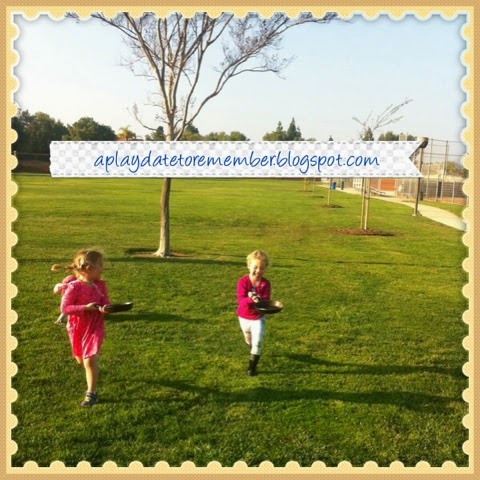Spring is in the air! This season cunjours up thoughts of budding flowers, April showers and rainbows. To get our muscles moving and develop our creativity, we made some dancing rainbow sticks and took them to the park to explore. The dancing rainbow sticks were so easy to make. I hope you enjoy them as much as we did.

Who can play?
Children aged 3 years. As with all activities it depends on your child's age and stage of development.
Safety:
Ensure that the stick you use is not sharp and depending on your child's age and stage of development, alter the length of the stick (shorter for younger children)
Supervision is needed at all times.
What do you need?
1. A stick
2. Ribbons in various colours
3. Rubber band
4. A wide open space
What did we do?
1. The first thing we had to do was to create our dancing rainbow sticks. This was done by simply attaching several pieces of colored ribbon, with a knot to the top end of a short stick.
To give extra support, I placed a rubber band around the knot...and there you have it... Your completed dancing rainbow stick.
2. All that is left to do now is take it to the park and explore. Below are a few ideas of how we played with it;
We attached it to the top of the climbing structure and watched the ribbons blow in the wind. We discussed why it was moving and what direction the wind was blowing.

I would hold the dancing rainbow stick and run with it. Bee loved trying to catch it, reaching high and low.

We would make straight lines, curves and swirls with the ribbons and attempt to write letters in the air.

Another favorite was to just run and let the ribbons fly and flap in the wind behind you. I love the sense of freedom in this photo.

What did we learn?
Physical- Developing large manipulative skills as you make small/large movements in the air and waving the rainbow stick. Fine manipulative skills when attaching the ribbons to the stick.
Art and Design- Creating your own game with the stick and dancing. Colour recognition.
Communication and language- Following directions such as, Can you catch it on the floor or up in the air?
Literacy- Writing letters in the air with the ribbons.
Personal, Social and emotional- Fun and enjoyment when playing with the rainbow stick and with you. Developing relationships.
Knowledge and understanding- Learning about weather conditions and elements.
Mathematical- Counting the ribbons on the rainbow stick. Measuring the ribbons. Shape and space awareness.
Possible Next Steps:
1. Make shapes in the air with the dancing rainbow sticks
2. Why not add music to the play. Experiment with different styles for example, slow music will encourage slow movements and upbeat music will encourage your child to dance faster.
3. Encourage your child to take the ribbons off the stick and reattach. This will develop their fine manipulative skills.





















